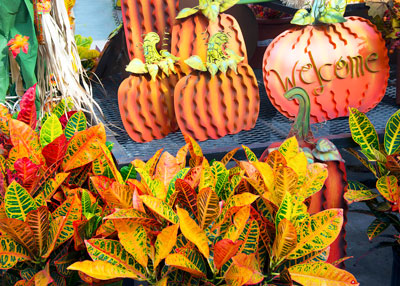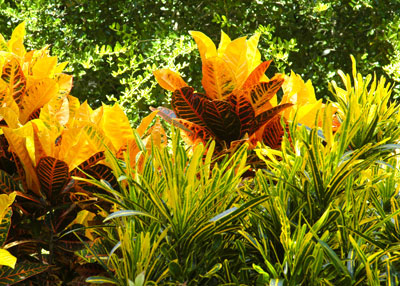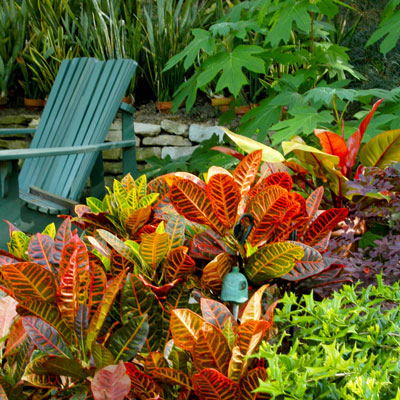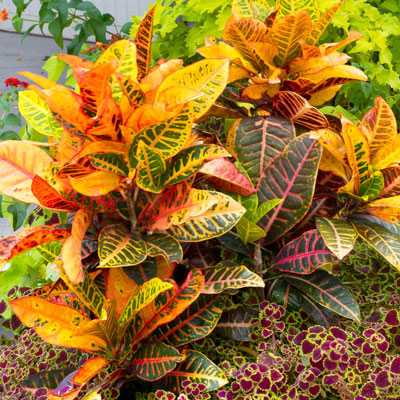Captivating Crotons
I was in a garden center just a couple of days ago, and they were packed with gorgeous crotons in sizes ranging from tabletop pots to big patio containers. It made my heart race, because I remembered how hard it had been to find them earlier in my career.

Photo: Nurseries are filled with eye-grabbing crotons and other fall delights.
You see a lot more crotons now because we’re using them spring through fall as outdoor summertime color. Landscape contractors plant them right into beds. There’s a second big surge come fall, because no plant that we grow has any more dramatic shades of fall colors.
Light is the big issue for crotons. They’ll be completely green (lacking the striking variegation) if you grow them outdoors in shade. And it gets even worse if you try to overwinter them in a dark spot in your home or garage. The old leaves soon drop, and the new leaves that are produced are completely green and uninteresting.

Photo: Bright sunlight in morning resulted in brilliant foliar colors. Any more sun and the leaves would probably have scorched. Varieties are ‘Petra’ and ‘Twist and Point.’
Most of my crotons are in full morning sun until 10 or 11 a.m. in summer, then I give them protection from large trees the balance of the day. That’s enough light to color them up, but not so much shade that they’ll “go to green.”

Photo: These plants are in a part of the Sperry landscape where it’s too shady for most flowering annuals. They certainly do provide color to their surroundings.
Crotons need highly organic, lightweight potting soil. I include about 10 percent expanded shale with any potting soil I use. That gives the potting mix a little more weight (ballast), so the plants aren’t as likely to tip in the wind. I use pots that are approximately one-third as tall and wide as the plants are, and when the plants outgrow them, I repot them quickly.

This attractive mix of crotons, coleus and ornamental sweet potatoes is all in the ground, being used strictly as annuals.
Bring your crotons into a greenhouse or bright sunroom for winter. They’ll be ruined if you try to keep them from November until March in a garage or a dark corner of your house. If you have access to a greenhouse, put them in elevated positions so that they get all available sunlight in winter. If all else fails, you might put your plant on a plant dolly and shuttle it in and out as temperatures and wind allow. Crotons should not be exposed to temperatures below 35 degrees, and certainly not down to freezing.
Keep your plants moist at all times, and apply a high-nitrogen, water-soluble plant food every few times that you water them. If you decide you want to try your hand at propagating them, air layering is your best option. Check YouTube for videos of the process. It will work on rubber plants and many other tropicals.
